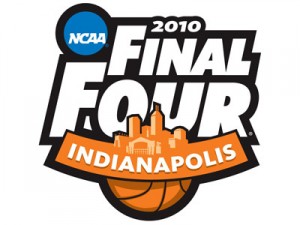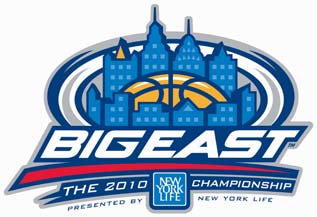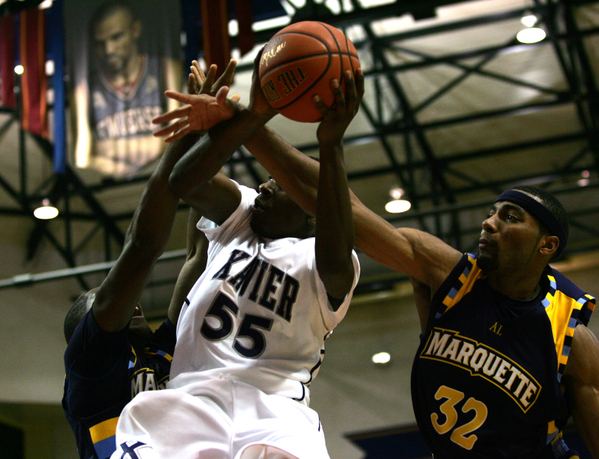Summer School in the Big East
Posted by Brian Goodman on August 16th, 2010
Rob Dauster of Ballin’ is a Habit is the RTC correspondent for the Big East Conference.
Around The Big East:
- NCAA Sanctions: From a basketball perspective, the biggest story in the Big East this summer was up at UConn. The Huskies received a notice of allegations from the NCAA in May, informing them of eight major violations in the recruitment of Nate Miles. UConn will find out its final punishment from the NCAA in October, but the violations have already cost them two assistants — Beau Archibald and Brad Sellers, the son of former Husky star Rod Sellers. Jim Calhoun avoided the heavy artillery — getting grazed with a citation for “failure to monitor” the program, which is ironically what the best coaches need to do to succeed.
- Coaches: The NCAA infractions weren’t the only reason Calhoun was in the news. Ailing health as he nears 70, impending NCAA sanctions, a team that is going to need some rebuilding, and the fact his contract was up made many believe Calhoun would hang ’em up this summer. Wrong. He signed a five-year deal instead. Calhoun had far from the worst summer for coaches in the Big East. Rick Pitino let the world — and every single opposing student section — know about his 15-second tryst on a restaurant table with one Karen Sypher. Bob Huggins fell, a result of being in Vegas the medicine he took on an empty stomach making him light-headed, and broke seven ribs. Fred Hill was run out of Rutgers, in part because he lost it on the Pittsburgh baseball team’s coaching staff. Through all of that, perhaps the worst summer was had by Bobby Gonzalez, who lost his job at Seton Hall, had the entire episode come out in the New York Times, sued his former employer, was unable to receive credentials at the NBA Draft, and then find himself arrested for attempting to steal a $1,400 man-purse satchel. The three new coaches to the conference: Oliver Purnell left Clemson for DePaul; Mike Rice left Robert Morris to fill in for Hill at Rutgers; and Kevin Willard left Iona and took Gonzo’s spot at Seton Hall.
- LOIs: Three Big East teams made headlines for issues with recruits signing LOIs. DePaul initially refused to release Walter Pitchford, Jr., from his LOI. He signed with Jerry Wainwright, who was at DePaul before Purnell was tabbed. After appealing both the school and the NCAA, DePaul finally released Pitchford. The same thing is currently happening to Joseph Young at Providence, who as of this writing has not yet been granted a release by the Friars. At Marquette, DJ Newbill was dropped from his LOI when Buzz Williams had the opportunity to bring in former top 100 recruit Jamil Wilson, a transfer from Oregon. All in all, Big East members did not shine bright this summer.
- Back to Providence: Man oh man, did they have a rough summer. Two freshmen kicked out of school for beating up a student. Their star, Greedy Peterson, thrown off the team. Another player arrested. Did Keno Davis have this much trouble in mind when he took the job two years ago?
- Seton Hall Didn’t Fare Much Better: Aside from their coach being kicked to the curb, the Pirates had their best big man spend nearly a month in the hospital because he collapsed after finishing a workouts and saw Robert “Sticks” Mitchell get arrested for (get this) robbing eight people at gunpoint just two days after being kicked off the team.
Power Rankings:
- Villanova: While the Wildcats lose All-American Scottie Reynolds, Jay Wright‘s club (as always) will be more than fine in the backcourt. Corey Fisher, fresh off an alleged 105-point performance in a Bronx summer league, and Maalik Wayns will be as dynamic as any backcourt in the country and should be able to thrive in Scottie’s absence. Corey Stokes is still going to be a lights out shooter. Dominic Cheek and James Bell will be dangerous on the wings. Up front, the five-man rotation of Antonio Pena, Mouph Yarou, Isaiah Armwood, Maurice Sutton, and JayVaughn Pinkston gives Villanova a very deep, very talented roster for the upcoming season. The Wildcats should compete for the Big East title and, depending on how well some players develop (Armwood, Cheek, Wayns, Yarou) and how good a couple of freshmen are (Bell, Pinkston), Nova could very well make a run at the Final Four.
- Pittsburgh: The Panthers were the surprise of the Big East last season, and with the majority of their roster coming back this season, its tough to envision Pitt falling off. Pitt has almost reached the level of a Wisconsin — no matter who is on their roster, this is a team that is disciplined and well-coached to the point that they are always going to be competitive. As always, expect a gritty, defensive-minded team from the Panthers. An already-solid back court of Ashton Gibbs, Brad Wanamaker, and Travon Woodall will be bolstered by the addition of freshmen Isaiah Epps, JJ Moore and Cameron Wright, as well as Lamar Patterson finally getting healthy. Gilbert Brown, who missed the first half of last season due to academic issues, will be back at the small forward spot. Brown had an inconsistent season in 2010, but showed flashes of some serious potential. Gary McGhee and Nasir Robinson will bolster the front line, but the real x-factor on this team is going to be sophomore Dante Taylor. Taylor was one of the most highly-touted recruits last year, but it took him awhile to adjust to the Big East. If Taylor can live up to his promise, Pitt is a potential Final Four team. If not, this is still a club that will be competing for a league title.
- Syracuse: It is easy to look at the Orange and think that, with the players they lost (Wes Johnson, Andy Rautins, Arinze Onuaku), they will be down next season. Well, they might not win a Big East title, but they certainly will be in the mix atop the conference standings. Brandon Triche and Scoop Jardine will anchor the backcourt, with freshman Dion Waiters providing an offensive spark as an off-guard. Kris Joseph should blossom into a dangerous weapon as a slasher on the wing, and if he can add some strength and a jumper this summer, could very well be in the running as a first-team all-Big East selection. Rick Jackson will be paired with Fab Melo, who Jim Boeheim has been raving about (he raved about Johnson last summer, and look how that turned out), in the frontcourt. With guys like CJ Fair, Mookie Jones, James Southerland and DaShonte Riley providing minutes off the bench, there is no doubt Syracuse will be a good team. How good — borderline top-25 or a potential Big East champ — remains to be seen. Read the rest of this entry »































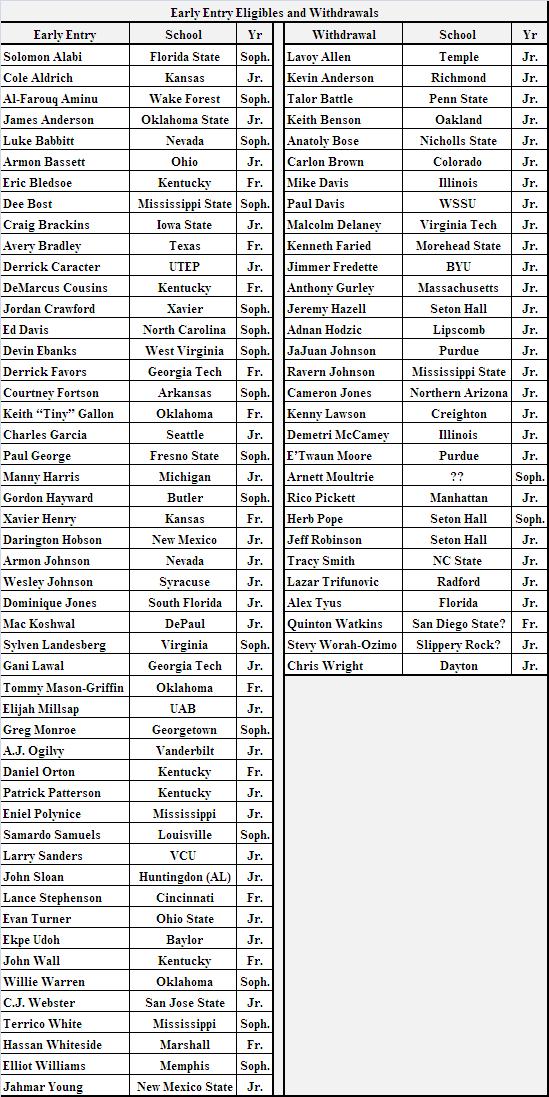
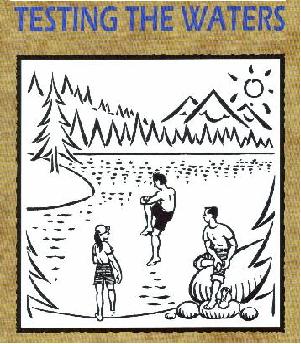


![438012310054_Kentucky_v_Arkansas[1]](http://rushthecourt.net/wp-content/uploads/2010/04/438012310054_Kentucky_v_Arkansas1.jpg)

